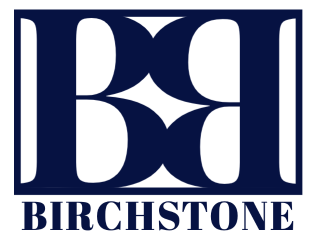In the vast landscape of real estate investments, multifamily properties stand tall as a solid foundation for wealth creation and long-term stability.
Like a sturdy building with multiple floors, multifamily real estate offers investors the opportunity to reap higher returns and enjoy consistent cash flow.
With its low risk and volatility, multifamily investments have proven to withstand economic uncertainties and outperform other asset classes.
This ultimate guide delves into the intricacies of multifamily real estate investments, exploring the different types of properties, their benefits, and the financial aspects that make them an attractive option for savvy investors.
Key Takeaways
- Multifamily properties offer higher rental income potential and consistent demand for housing.
- Multifamily investments provide scalability for portfolio expansion and diversification of investments.
- Multifamily properties have low risk and volatility, favorable demographics, and the potential for passive income.
- Multifamily real estate offers long-term wealth creation, stability, and the opportunity for increased returns through economies of scale.
What is it?
Multifamily real estate refers to properties that are designed to accommodate multiple families, such as apartment complexes, high-rise buildings, mid-rise apartments, garden-style apartments, duplexes, triplexes, and quads. Investing in multifamily properties offers several advantages compared to single-family homes.
One advantage is the potential for higher returns. Multifamily properties can generate more rental income compared to single-family homes, as there are multiple units that can be rented out. Additionally, multifamily real estate market trends show a consistent demand for housing, making it a stable and reliable investment option.
Another advantage is the scalability of investments. Investors can start with smaller properties and gradually expand their portfolio by acquiring larger multifamily properties. This allows for diversification and the potential to generate more cash flow and passive income.
Overall, investing in multifamily properties provides a promising opportunity for investors to achieve higher returns and build wealth.
Types of Multifamily Real Estate
Apartment complexes, high-rise buildings, mid-rise apartments, garden-style apartments, duplexes, triplexes, and quads are examples of properties that fall within the realm of multifamily real estate. These types of properties offer investors the opportunity to diversify their portfolio and potentially achieve higher returns compared to single-family homes.
However, it is important to note that there are limitations and considerations when investing in smaller multifamily properties. Smaller properties may have limited cash flow potential due to lower rental incomes, higher expenses, and increased management requirements. Additionally, financing options for smaller properties may be more limited compared to larger multifamily properties.
Despite these limitations, investors can still benefit from the potential for higher returns in multifamily real estate by carefully evaluating the market, selecting properties with strong rental demand, and implementing effective management strategies.
Benefits of Multifamily Real Estate Investments
One advantage of investing in multifamily properties is the potential for long-term wealth creation due to the low risk and low volatility associated with these types of real estate investments.
Multifamily real estate investments offer favorable demographics and scalability, which further enhance their appeal.
Favorable demographics, such as population growth and increasing demand for rental housing, contribute to a steady and reliable stream of income from multifamily properties.
Additionally, the scalability of these investments allows investors to expand their portfolios and increase their returns over time.
By acquiring multiple units within a multifamily property, investors can benefit from economies of scale and generate higher overall profits.
This scalability also provides investors with the opportunity to diversify their holdings and mitigate risk.
Overall, multifamily real estate investments present a compelling opportunity for individuals seeking long-term wealth creation in a relatively stable and predictable market.
Frequently Asked Questions
How do I determine the potential cash flow of a multifamily real estate investment?
Calculating cash flow in multifamily real estate investments involves analyzing market trends, rental income, operating expenses, and financing costs. By assessing these factors, investors can determine the potential cash flow and evaluate the profitability of their investment.
What are the key factors to consider when selecting a location for a multifamily property?
When selecting a location for a multifamily property, factors such as demographics, proximity to amenities, job opportunities, and market trends must be considered. Property analysis should also assess potential rental income and long-term growth prospects.
What are the main risks associated with investing in multifamily real estate?
Investing in multifamily real estate comes with risks, especially in terms of financing. These risks include potential vacancies, economic downturns affecting rental demand, unexpected maintenance costs, and difficulties in securing financing for larger properties.
Are there any specific regulations or legal considerations to be aware of when investing in multifamily properties?
Regulatory compliance and legal documentation are crucial considerations when investing in multifamily properties. Investors must adhere to local, state, and federal regulations, obtain necessary permits, and ensure proper documentation for leasing, tenant rights, and property management.
How can I evaluate the management team or property management company for a multifamily investment?
When evaluating a management team or property management company for a multifamily investment, it is important to consider their hiring process and the track record of their past performance in managing similar properties.

